Then we went to the beach that belongs to Botafogo quarter, but it was in fact not used as a proper beach at all. It was clear to me why when I got to the edge of the water. The water seemed almost greasy and muddy, since there is a large marina with boats in that bay. Admittedly, on the large beach I did see a couple of people sunbathing and that was it. I could not understand it how they could lie there since it seemed incredibly hot to me, but coming to this beach was still absolutely worth the effort and enduring the scorching sun on account of the stunning view at Sugarloaf.
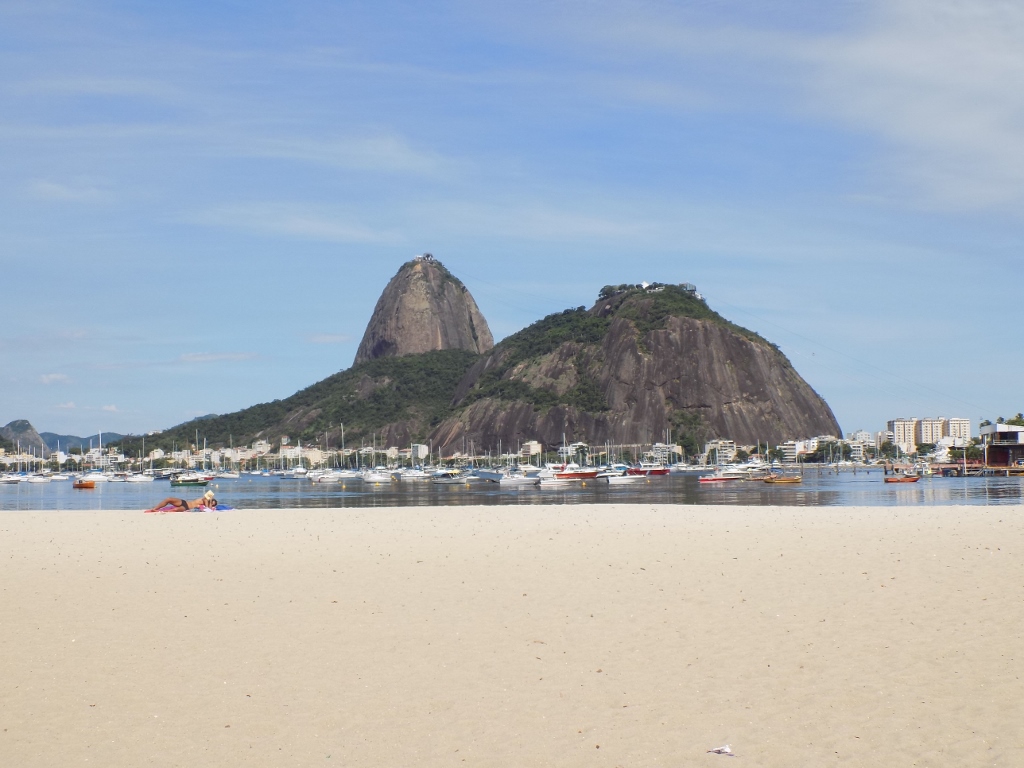 View at Sugarloaf from Botafogo beach
View at Sugarloaf from Botafogo beach

I went back to a bench in the shade where Sneza patiently waited for me and then we both went to Copacabana. I’m thinking of the quarter here. There we found a tourist information office and got a few very good maps, as well as some information that was quite useful.
To start with we asked if there were any tours visiting favelas, but they told us in a rather discreet tone of voice that “this was not the right moment to visit favelas.” I guess this was supposed to mean that the police was on the defensive again and they could not ensure the conditions safe enough for tourist visits.
When tourists visit these favelas, they can usually be taken around only by local guides, but then the police have the upper hand and can secure safety for the visitors. I must admit that the information we got did not disappoint me, since I was not particularly keen on visiting the “informal settlements.” Through my line of work, on several occasions I’ve visited informal settlements around Serbia and these Brazilian favelas that had electricity to start with, houses made of solid materials and where children did not walk in mud with bare feet and bottoms while I had a warm winter jacket on (simply because it is never so cold in Rio for people to wear winter jackets) did not make a great impression on me even as a mere idea. Admittedly, these places I’ve visited in Serbia (and there are certainly many, many more of them in different parts of the world) were completely visitor-safe, so I guess they are not “exotic” enough for courageous and well-off tourists to speak later on about how they visited and looked at them and took photos of their residents.
What I was interested in was a visit to Corcovado. This is a mountain on the top of which there is the statue of Christ the Redeemer. It may be reached by funicular or by van. We were given a recommendation to go there by van and this also seemed easier to do since they left from just a few hundred metres away from that tourist information office. Admittedly, the guide book we were using said the vans worked only until 4 pm, but we were told by the tourist office that Corcovado could be visited until the evening. It was only when we got to the place from which the vans departed that we realised what this was all about. The ticket office actually does work until 4 pm, but the vans continue to operate by giving you a coupon with which you buy a ticket later on. The price includes two-way transportation.
In this case, like in the case of Sugarloaf, there is a change of the vehicle. The vans take visitors to the place where there is an entrance into the Tijuca National Park, we bought our tickets there, and then the visitors move to another van that takes them to the top of Corcovado mountain.
By the way, the Tijuca NP offers ample hiking opportunities and when one has more time, it may indeed be a nice thing to go there for a walk or some sightseeing. Namely, the National Park also includes a rainforest of the same name that is one of the biggest urban rainforests (a rainforest on the territory of a city) in the world.
The monument to Christ the Redeemer was erected in 1931 on the top of Corcovado mountain which is 710 m high. The monument itself, not counting the pedestal, is 30 metres high, while the span of the stretched arms is 28 m long. Around it, as well as in front of it, there are a few plateaus from where it is possible to watch the monument itself and there are also stunning views at Rio from there.
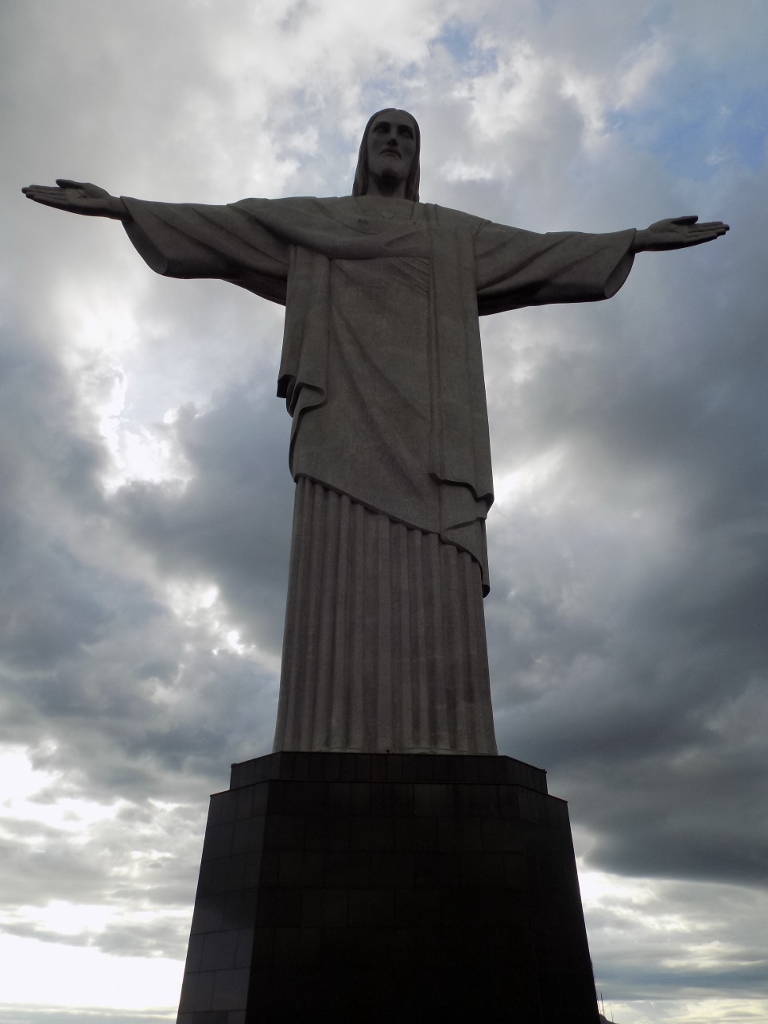 Christ the Redeemer
Christ the Redeemer
At the beginning of the 21st century, there was a campaign organised for the selection of 7 modern wonders of the world. The voting was done by internet and phone, and in the end (in 2007) the list was published. Among the “first” seven there was this statue, too. I find this kind of “competitions” completely ridiculous, but there, this is one of the trivial pieces of data that may be found on the topic of this statue.
There were a lot of people on the plateau from which this impressive statue rises and yet it was clear to us on the basis of the lines we were seeing, which were short in comparison to the potential (this may be concluded by the length of those “passages” made by small stanchions and belts that wind like a snake), that in fact there were not many visitors at this time.
Be as it may, we visited it all nicely and with no rush. When I say “all” I mean that we admired the beauty of Rio from all possible angles. We even had a coffee break and then we repeated the visits to all the places with the best view, but it was certainly worth it since we counted, as the day was getting close to the end, that the light conditions had changed and the sights appeared different. Maybe yes, maybe no, but they were still unquestionably magnificent.
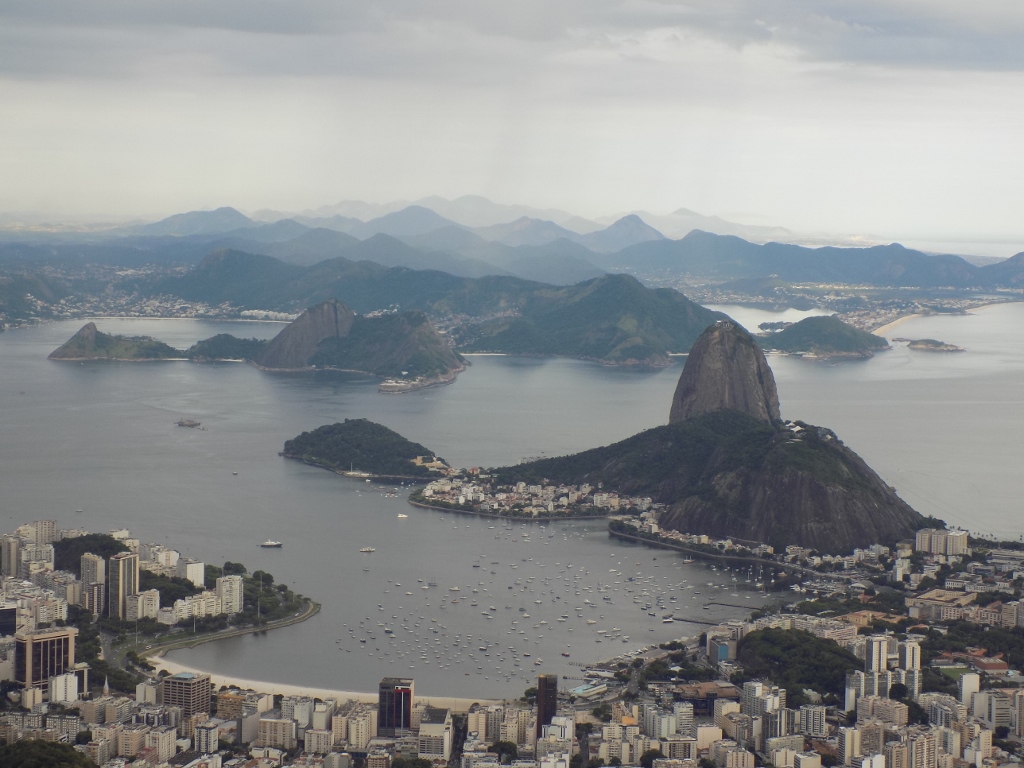 Rio de Janeiro, one of the most classic views
Rio de Janeiro, one of the most classic views
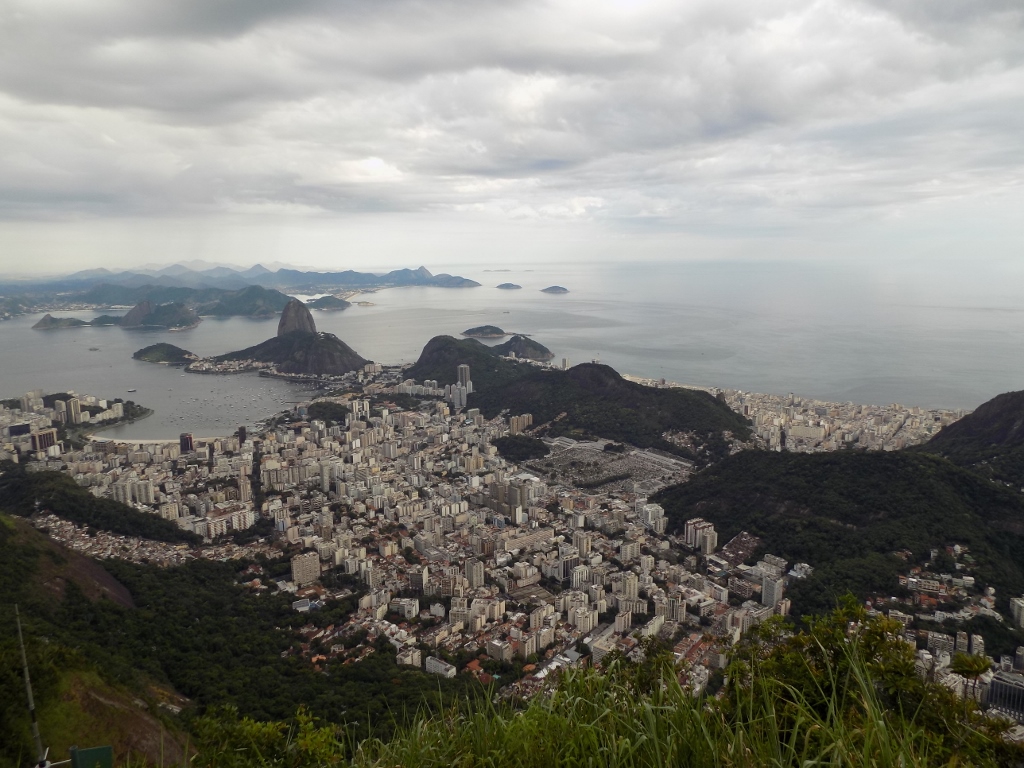 Botafogo quarter is in the front, Sugarloaf is left and up, while Copacabana is to the right
Botafogo quarter is in the front, Sugarloaf is left and up, while Copacabana is to the right
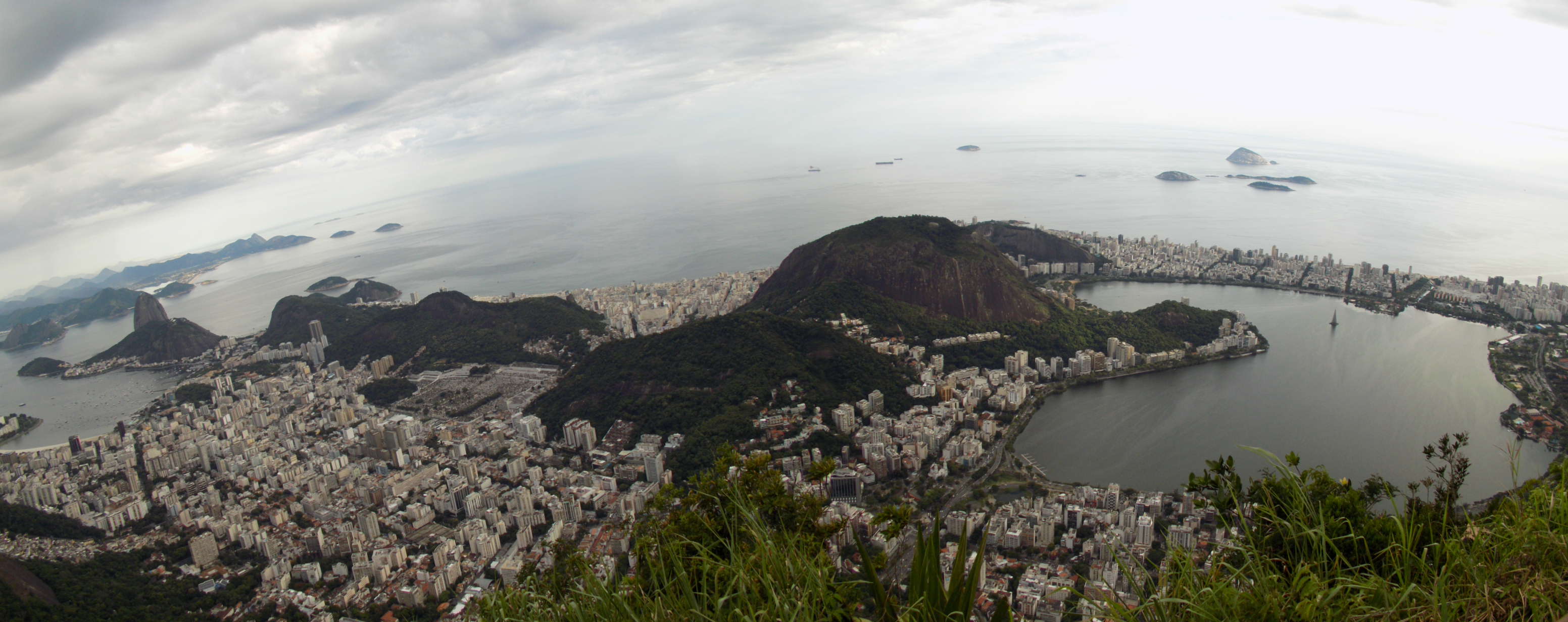
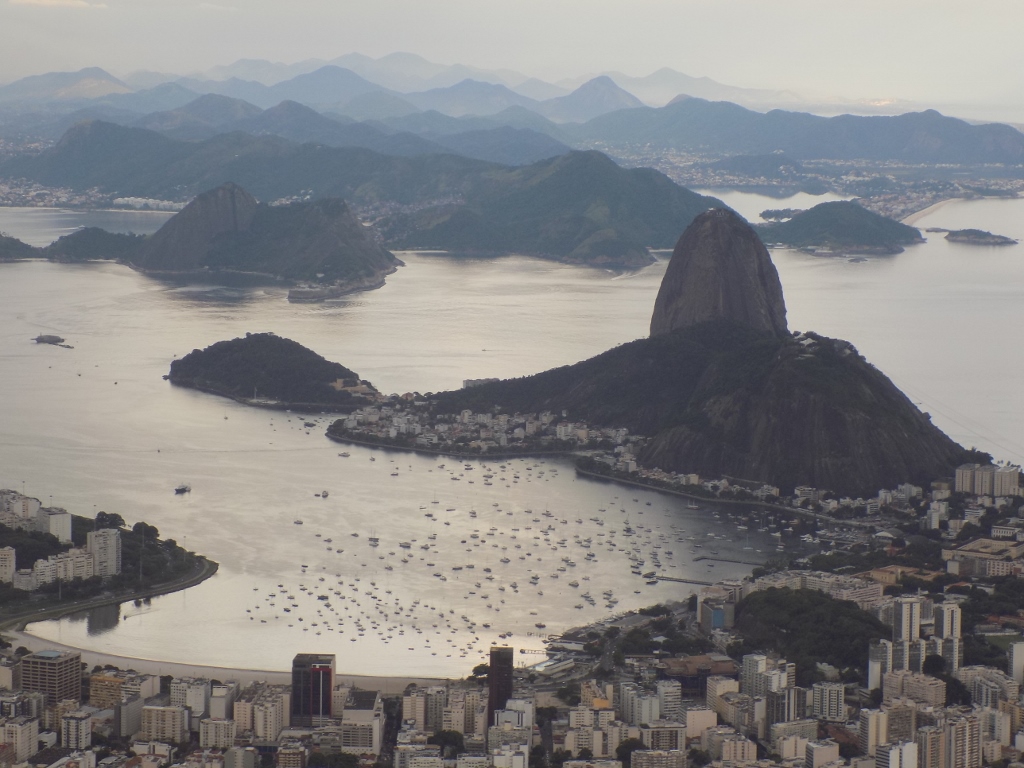 The light is slightly different after all
The light is slightly different after all
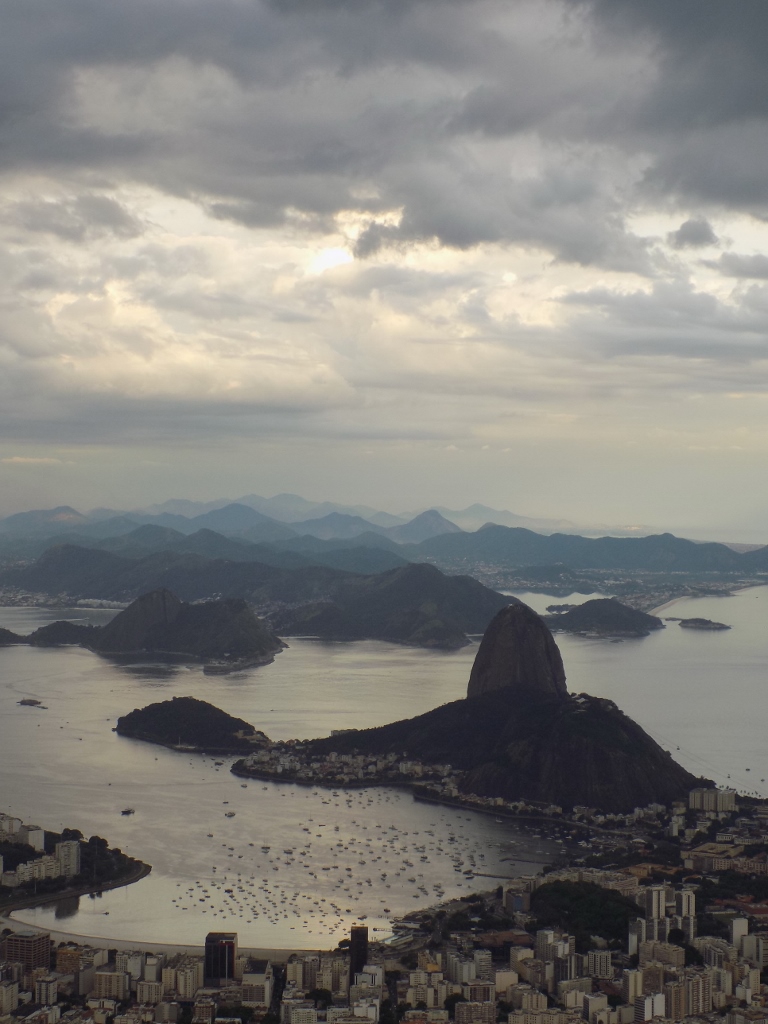 And here is why: just look at the sky
And here is why: just look at the sky
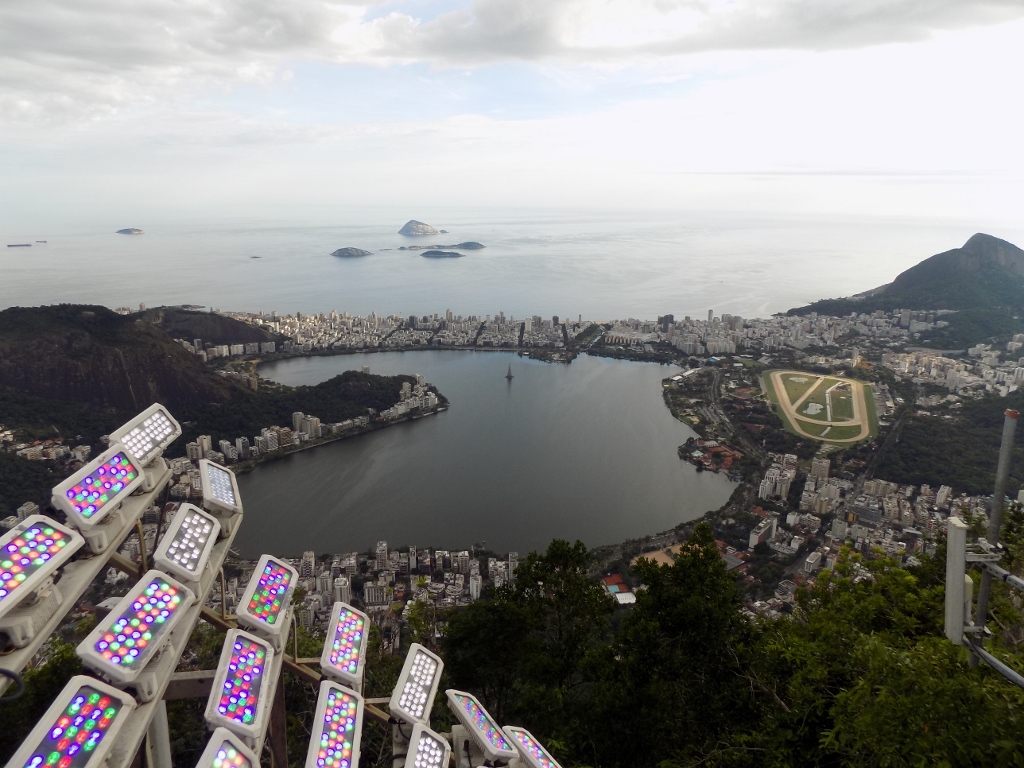 View at Ipanema and Rodrigo de Freitas Lagoon; the lights for the statue of Christ the Redeemer are already on
View at Ipanema and Rodrigo de Freitas Lagoon; the lights for the statue of Christ the Redeemer are already on
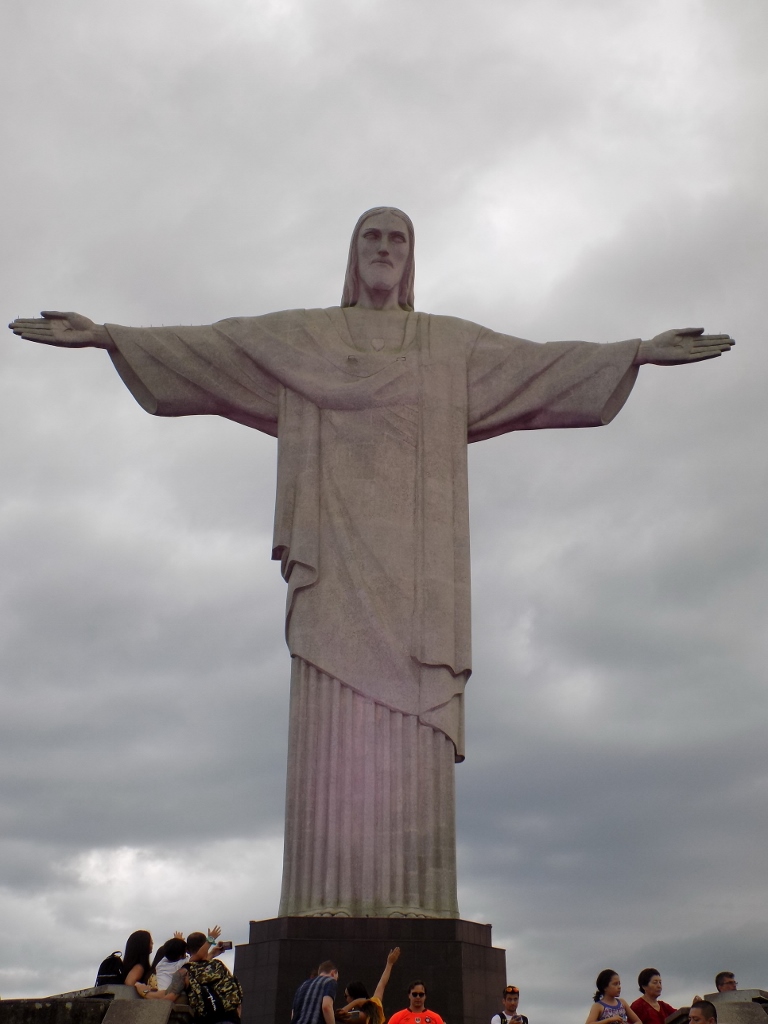 Christ the Redeemer, at dusk when it is already lit by the lights
Christ the Redeemer, at dusk when it is already lit by the lights
Rather exhausted we went back to the surroundings of our hotel where we went to eat something before retiring to the hotel room and going to sleep.
The following day we decided to go to the centre finally and in order to do that we used the underground. Taxis in Rio are comparatively not too expensive, but the two of us wanted to use public transportation as much as possible. This always allows for a specific view into the local customs and habits.
Thus, for instance, at some point we found ourselves in an underground car in which there were signs in several places that it was earmarked solely for women on work days, from 6 to 9 am and from 5 to 8 pm. Apparently, Brazilian men have a tendency to touch inappropriately their female compatriots, especially when it’s crowded, and so the public transportation company decided to keep their female travellers safe from embarrassing situations.
In addition, we were impressed that there were several seats in an underground car that had a mark saying they were intended for the elderly, people with disabilities, pregnant women and parents with small children. Ok, we have that, too, but at some point it was a bit crowded in the car we had entered and yet two such seats were empty waiting for somebody who fitted into the above categories, while the others patiently kept standing.
Also, in a supermarket we noticed that there was a special counter for those with a small number of articles (we have that, too), as well as a separate one for the elderly, people with disabilities, pregnant women and parents with small children. This thoughtful approach to the weakest amongst us, at least under the letter of the law, was confirmed later as well in other parts of Brazil through which we travelled.
Our conclusion was that in Brazil they are consistently trying to take care of different categories of their citizens and to make services fit different people. Amazing!
So, we took the underground to get to the centre of Rio de Janeiro and there we got out at Floriano Peixoto Square, better known as Cinelândia Square, right in front of the Municipal Theatre, an impressive building constructed here at the beginning of the 20th century.
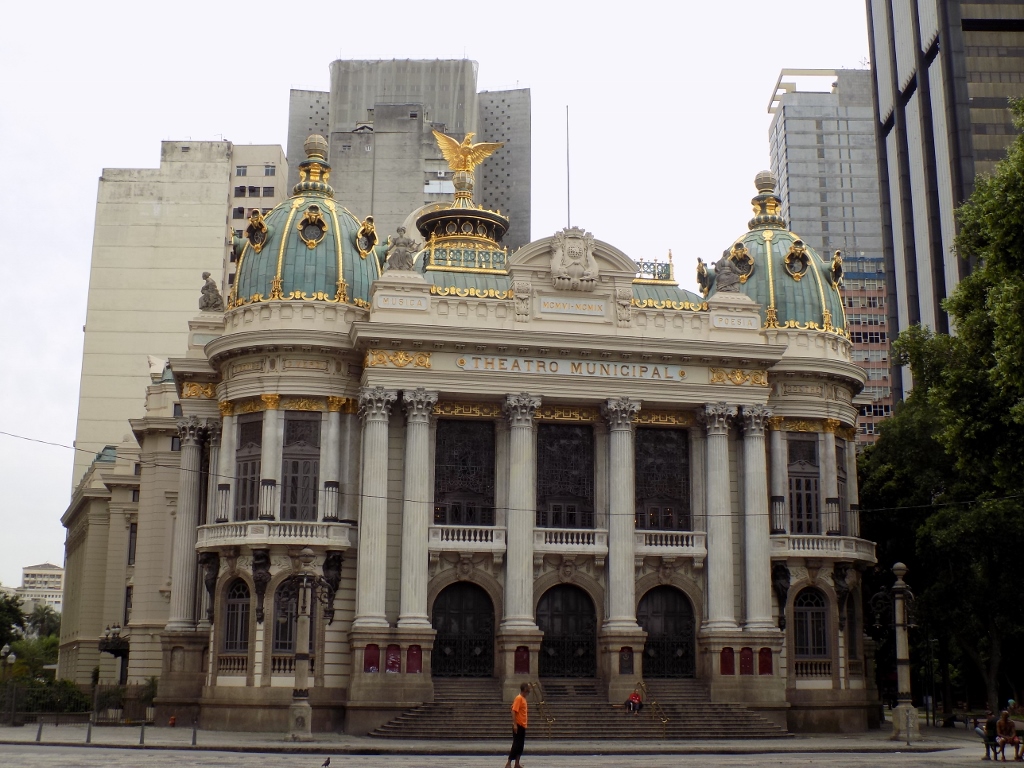 Municipal Theatre
Municipal Theatre
We first looked around the square in order to get our bearings and there we saw numerous homeless people who spent the night sleeping in the square.
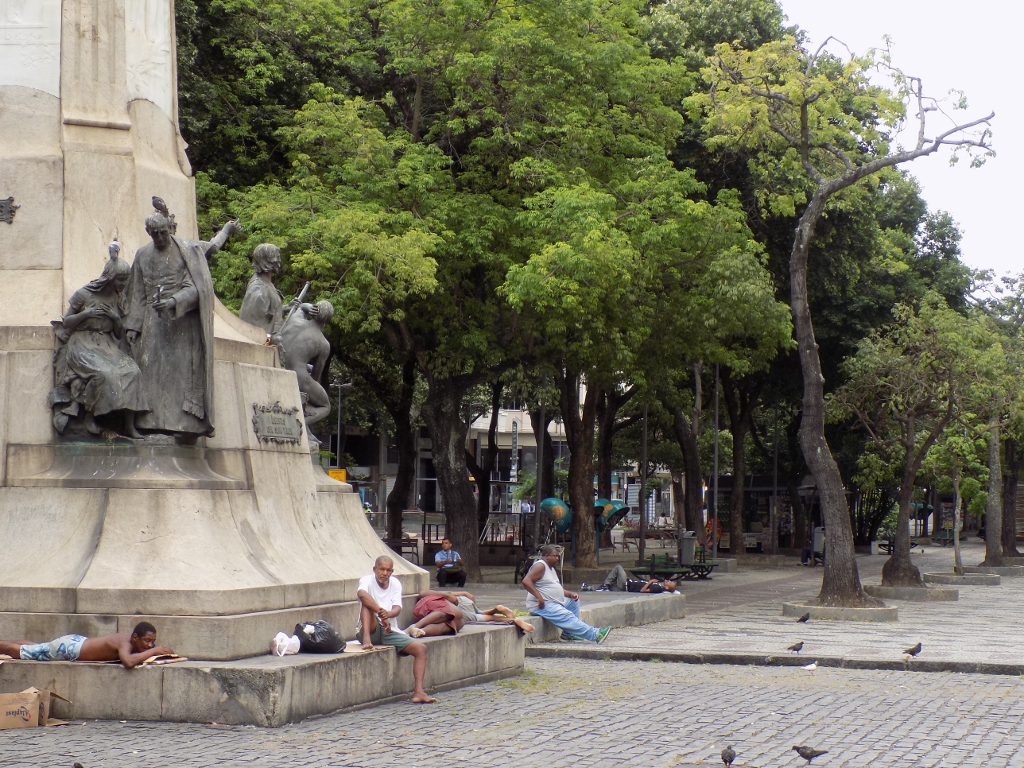 This is Rio, too
This is Rio, too
Then we walked to a building that was nearby and that is called Gustavo Capanema Palace. This is the Palace of Culture that used to be the seat of the Ministry of Education and Health in Rio de Janeiro. It was built between 1937 and 1945 on the basis of a design of a team of architects and in line with the original plans made by Le Corbusier. We were taken aback a little not because the entire block, i.e., the plot in which the building with pertaining green areas was located, was fenced off, but because we were somehow expecting more. Why more? Well, because this building is in the UNESCO’s Tentative Heritage List. Still, this was probably due to the fact that the two of us do not know much about architecture and its history, because this building is in the said list precisely as the first attempt of the modern Brazilian architecture. As such, it later had a decisive impact on all the significant architectural endeavours in Brazil and, by God, there were a lot of them.
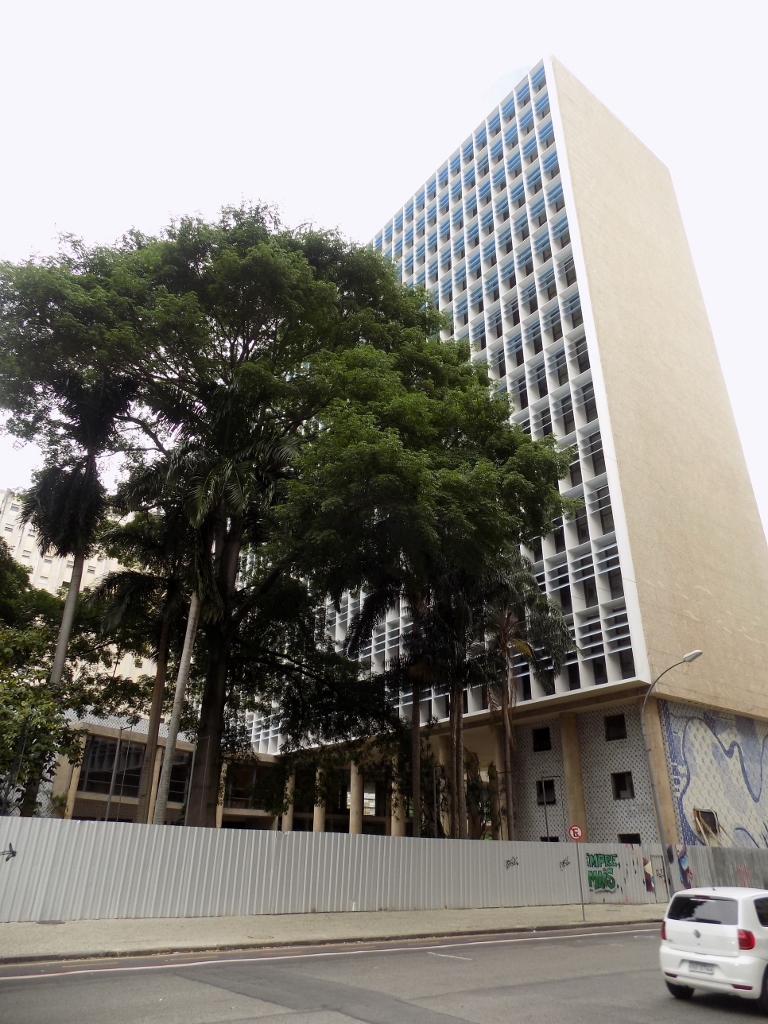 Gustavo Capanema Palace
Gustavo Capanema Palace
Since it was fenced off, as well as closed, we could neither see the green gardens around the building nor the murals in the interior (apparently, all of that is very important), but we could at least see the abstract mural made of the azulejo tiles on the outside. Better something than nothing!
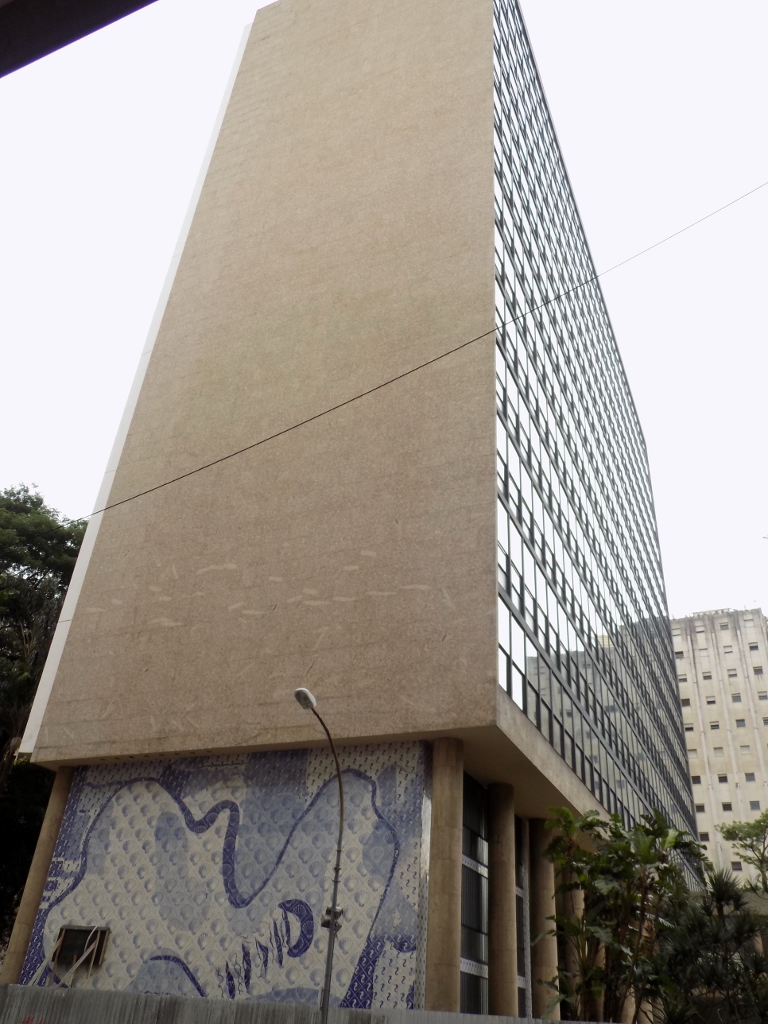 Gustavo Capanema Palace and the azulejo tiles mural
Gustavo Capanema Palace and the azulejo tiles mural
Then we walked over to Carioca Square where we first made sure we got good orientation, since we knew we had to get back here. To start with we went to see the Church of St Francis of Penance (Igreja de São Francisco da Penitência) which is adjacent to the Convent of St Anthony (Convento de Santo Antônio). The 17th-century church is known for its opulently decorated gilded interior, but there was a mass at the time we were there, so we did not stay for too long and simply continued to walk around the neighbourhood.
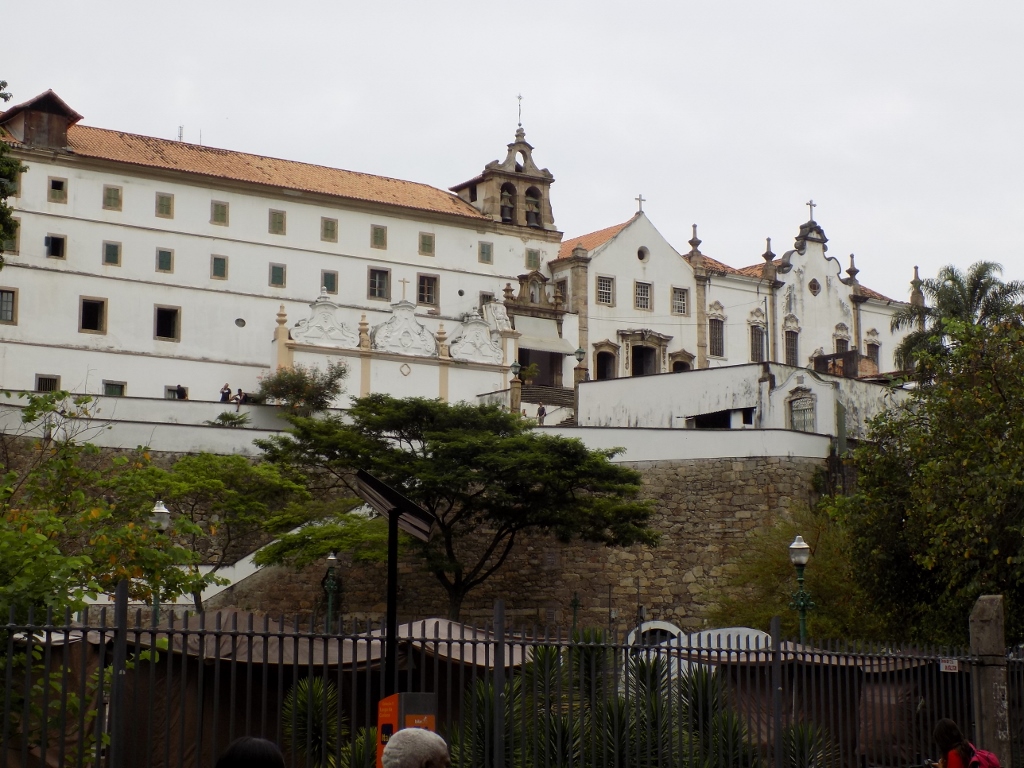 Convent of St Anthony and the Church of St Francis of Penance
Convent of St Anthony and the Church of St Francis of Penance
Passing by numerous shops we reached the Royal Portuguese Cabinet of Reading. Under any normal circumstances, I do not visit libraries on my journeys, but this one is something special and is considered one of the most beautiful libraries in the world. Unfortunately, we could not go in since it was Saturday and the library was closed.
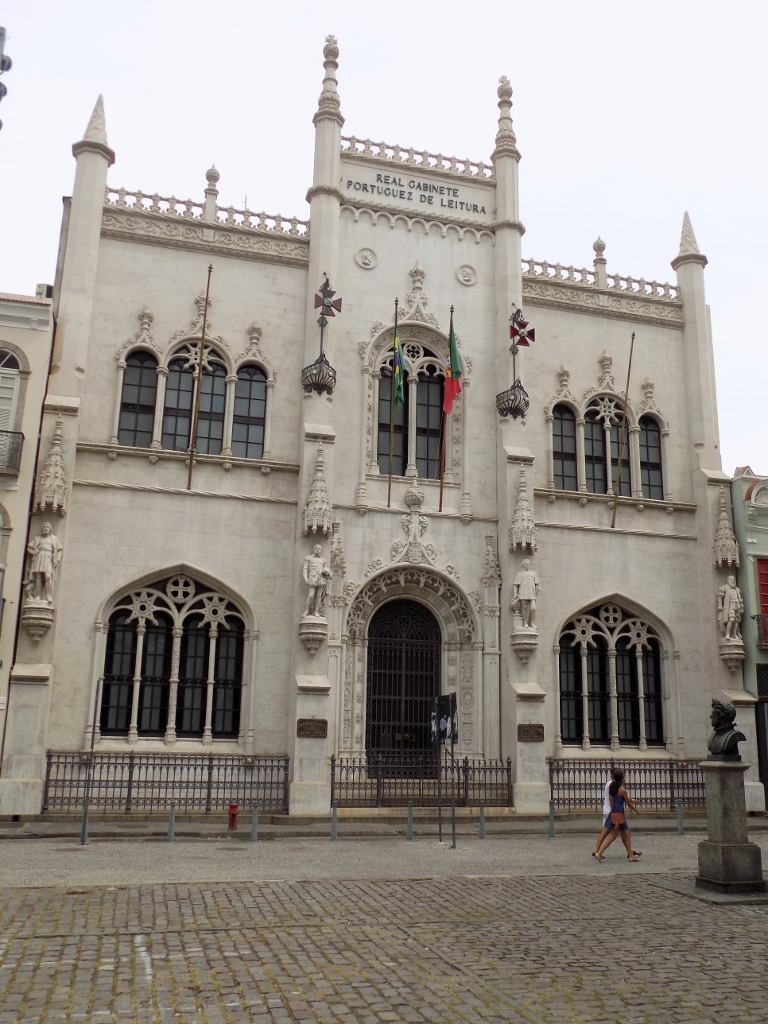 Royal Portuguese Cabinet of Reading
Royal Portuguese Cabinet of Reading
Opposite the library I noticed a house behind which there were modern buildings made of concrete and which had certainly seen better days. This was certainly not a unique building in Rio in this position, but often when I see an aged house anywhere I remember a comment of my dad who once said to me when we were passing by one such house in Belgrade: “Imagine how the people who moved into the house when it was first built must have been happy!”
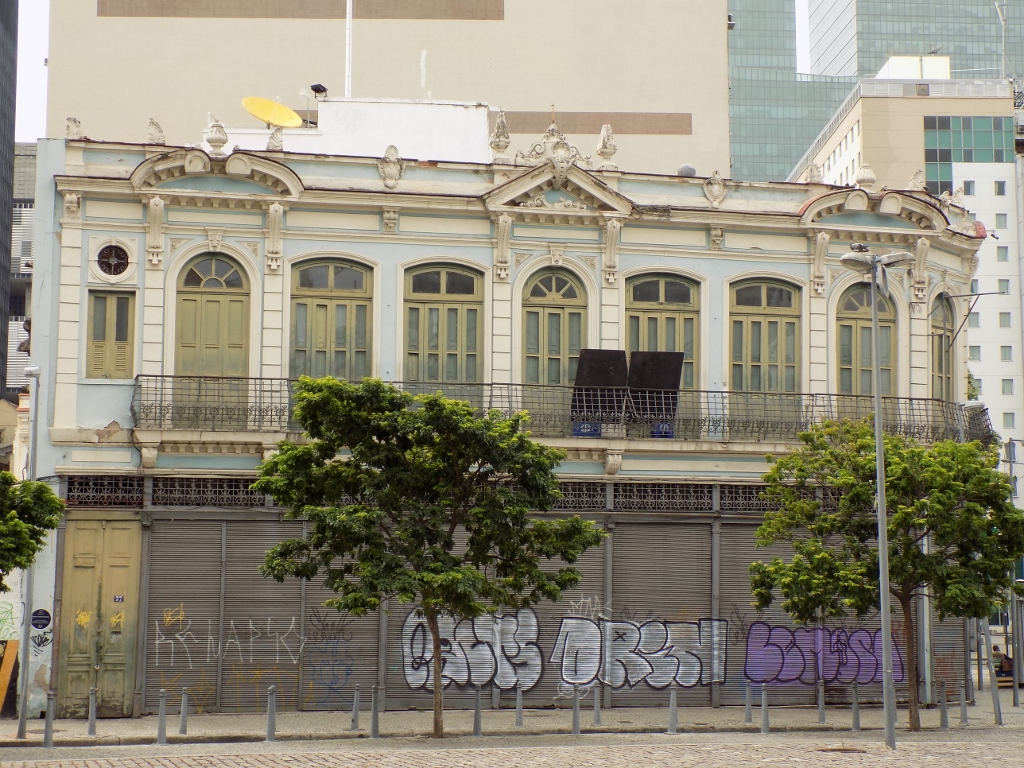 A memory of my dad
A memory of my dad
Soon we reached the Church of St Francis of Paula (Igreja de São Francisco de Paula) and we stopped by there. I found the church particularly impressive on account of its wood carving.
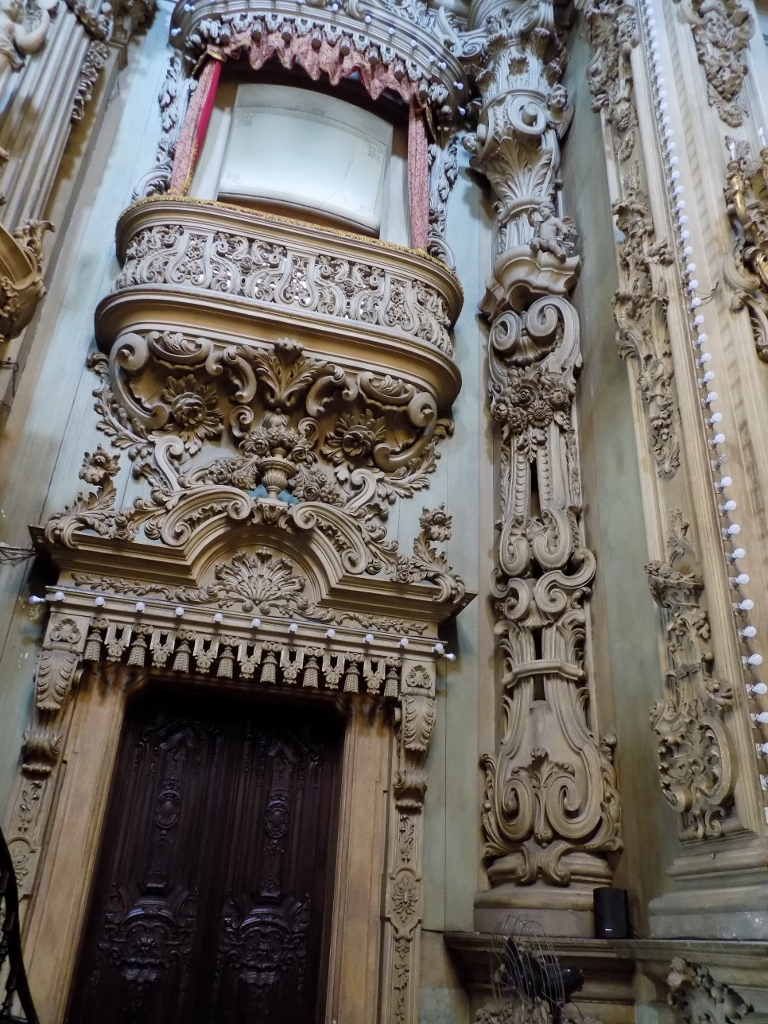 Interior of Church of St Francis of Paula
Interior of Church of St Francis of Paula
Then we continued with our walk and went to a square by the Imperial Palace that used to be the seat of the Portuguese rulers in Brazil. There were numerous stalls in the square and it seemed there was an antiquity fair going on. It was a Saturday and there were very few vehicles and even people in the streets of the commercial centre. Except here in the square and in the street leading to the Maritime Museum where people sold all sorts of trinkets, either on stalls or exhibited on the ground.
We did not stay here for long either, but opted to follow a street that led through a passage. The street’s name is Travessa do Comercio and it is known for its numerous restaurants and bars where a large number of people congregate. At the time we got there, and it was just past noon, a few restaurants were still getting ready to welcome their guests for lunch. However, we decided to get refreshed just by taking a coffee or something similar and accidently chose a restaurant that did not seem particularly attractive from the outside, but once we went through its front part and to the back one, it could be seen that the back section was made in the place where there used to be a house. Today, only the outside walls of the house have survived, while the interior has been remodelled into a contemporary and interesting restaurant space. Here I opted for a combination of lemonade, ginger and tea and this was a rather tasty and refreshing combination.
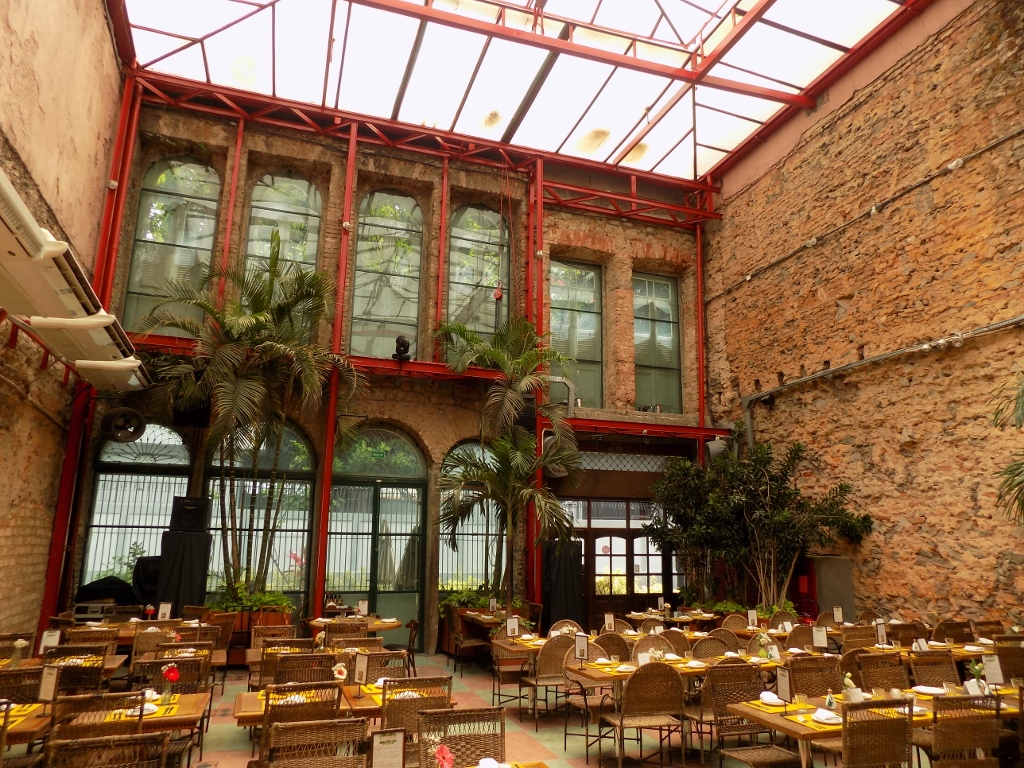 A restaurant getting ready to welcome visitors for lunch
A restaurant getting ready to welcome visitors for lunch
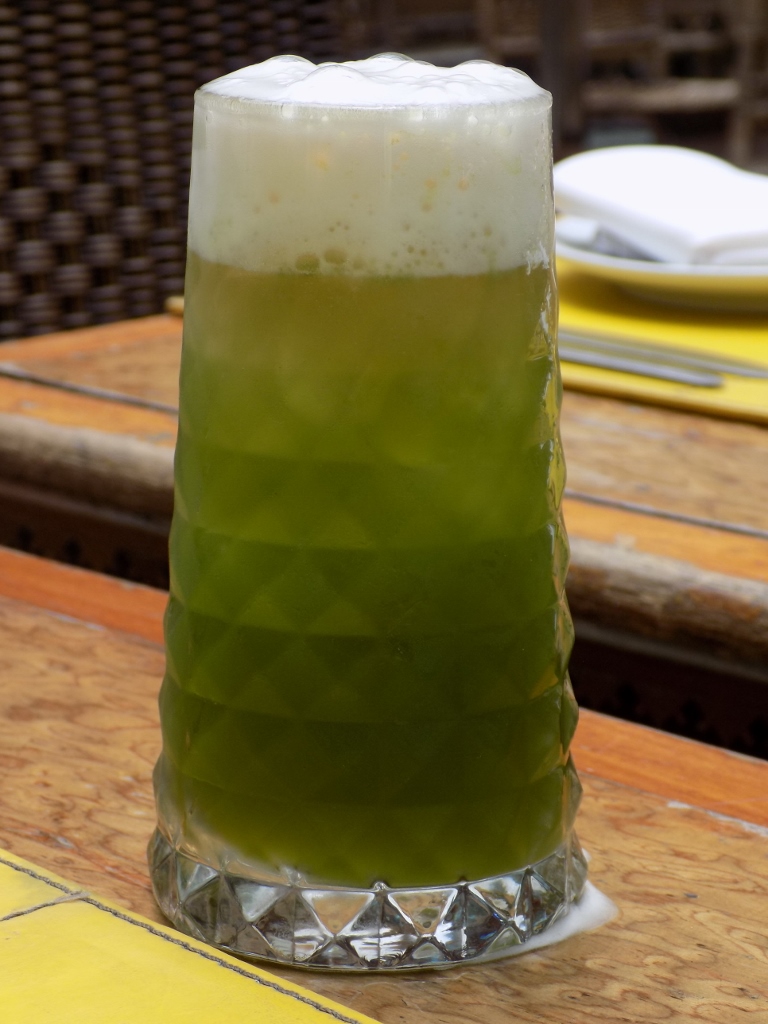 Ideal refreshing drink for a hot day
Ideal refreshing drink for a hot day